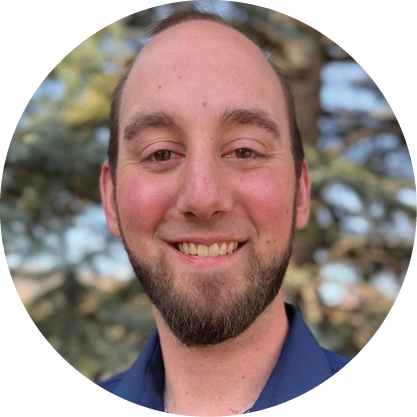



About

IN EVERY ISSUE
1.
PRESIDENT'S MESSAGE
Confusion Costs More Than You Think

2.
Publisher’s Message
Risk as a Path to Possibility

3.
FROM THE EDITOR
Understanding and Embracing Risk

Calendar of Events
4.

When your firm is faced with a big decision or opportunity, a number of questions should be raised, including, “How will this affect us in one, five, or ten years?” to “How much time, energy, and resources will pursuing this initiative take away from our core focus or mission?” and “What’s the potential upside?”. The idea of risk can be applied to a variety of aspects within the A/E/C business landscape. However, there are three key elements to consider regardless of the venture;
Time
Money
Energy

In 2024, Tamarack Grove Engineering (TGE) embraced a growth mentality and took advantage of multiple inherently risky opportunities, which are now paying off just 12 months later. Founded in 2003, TGE is a nearly 50-person structural engineering firm, headquartered in Boise, Idaho, and serving clients across North America.
In 2023, the leadership team at TGE adopted the Entrepreneurial Operating System, better known as EOS. During this shift, the firm developed a 10-year plan with goals to expand to 100 team members and reach $20M in revenue by 2033. At the beginning of 2024, the firm of 35 people was located in a single office, bursting at the seams. The Firm leadership knew something had to change, but they weren’t aware of the risks and opportunities that would arrive later that year. By June, the firm signed a lease on a new headquarters location, nearly tripling the size of the Boise office and providing an opportunity for the local team to increase to about 70 people over the course of 10 years.
During that same time, TGE was also set to lose a key engineer due to relocation to the East Coast, and was also having final discussions with an engineer in Bozeman, Montana. While some may see these as challenges, the team at TGE saw opportunities. By the end of August 2024, TGE had successfully relocated an engineer to Lyndhurst, New Jersey, with the plan to open an office there, and hired the first full-time engineer in Bozeman with the same goal, to establish an office and physical presence in Montana.
Payoffs to Creating Paths to Expansion
Although there was a lot of preparation, time, money, and energy put into these new ventures, the reward on the other side of the risk has proven to be worth it. TGE’s offices in Montana and New Jersey have grown to five and three team members, respectively, and the new headquarters location has surpassed 40 for the first time in firm history. Immediate benefits of taking these risks are proximity to key clients, the ability to provide quicker response times on project sites, and increased recruiting opportunities. Two clients that had been part of the firm for a few years each more than doubled their annual revenue with the firm as of June 2025 because of the firm’s new proximity to their offices.
Risk and Reward
Taking risks always has potential setbacks and challenges, but without risk, there is no reward. The COVID-19 pandemic significantly changed the landscape of the A/E/C industry and altered the way that businesses take and manage risks. During the pandemic, businesses often chose the safe route because of the uncertainty that lay ahead. Coming out of the pandemic, resilient A/E/C firms saw a positive bounce back for public and private projects, funding, and construction timelines. Although risk continues to shift with time, it’s important that firm leadership remains true to who their firm is at the core. For Tamarack Grove, the leadership team never lost sight of the fact that they were fostering a positive team culture, focusing on their niche of structural engineering across North America, and striving to provide opportunities for over 100 people.
Time
The question isn’t if a firm is going to encounter risky situations, but when. The most important factors when evaluating risk and developing a game plan are time, money, and energy. The first factor, time, is the one that is an equal playing field for everyone, because nobody is magically creating more time. To determine how much time an initiative might take, it’s important to decide who will dedicate time to the effort and what their specific responsibilities will be. Without clear direction and dedicated responsibility, timelines inevitably get delayed and initiatives either get pushed off or canceled altogether. Although stopping can save a firm from experiencing risk, the potential benefits of taking on risk can pay off more than originally intended if the effort is seen through.
Money
The second factor, money, is often considered the most important, but it is just one piece of the equation. Financial security must be considered before embracing a risky venture. Large initiatives often consume a portion of a firm's profit, but if the risk is calculated as something that will generate more revenue in the future, it's worth it. The safe option for TGE would've been to do business as usual, and stay in the same small headquarters office in Boise, without considering any larger spaces or additional locations. Although it was a significant investment up front, the firm's moves are viewed as investments and not flat out expenses because they will facilitate future growth.
Energy
The third and final factor, energy, may be the most abstract but is often overlooked until significant progress has been made. Energy takes both time and money, with considerable responsibility implications for each person's role in the new initiative. This is often the factor discussed when evaluating how much a tactic is taking away from other important tasks or projects. Sometimes, risks are labeled as distractions when they're really key efforts that will move the firm forward. Often, there is minimal immediate gratification, which is a key reason teams stop progress on risky activities before they pay off. All the more reason why any risky initiative must have a well-thought-out plan, including timelines, personnel, and progress checkpoints to drive long-term success. When investing a significant amount of time, money, and energy, there is no room to walk without a road map.
A/E/C marketing and business development professionals play a vital role in firm growth and success, being catalysts for planning and advancement. From branding to client relationships and establishing a local presence in a new location, to be valued as experts, we must embrace well-considered risky projects that will have significant growth implications down the road. Firm expansion is an exciting time for A/E/C marketing and business development professionals to embrace evolution and demonstrate the capacity to take on key firm development initiatives.
Duncan Robertson, CPSM, is the Director of Business Development and Marketing for Tamarack Grove Engineering, a structural engineering firm with headquarters in Boise, ID, serving clients nationwide. Duncan is responsible for driving strategic growth and cultivating lasting partnerships for his firm across the A/E/C industry. A founding member and past president of SMPS Idaho, Duncan is a recognized advocate for advancing the role of marketing and business development professionals in the built environment.
Connect on Linkedin








